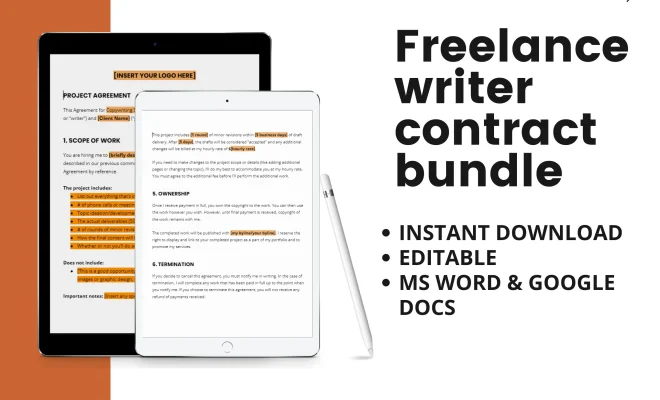How to Write a Freelance Contract (With Templates)

Freelancing has become one of the most popular work arrangements worldwide. As a freelancer, you are your own boss, set your own hours, and business choose your own clients. However, working without a contract could be detrimental to your business. A freelance contract clarifies the expectations of both parties, mitigates risks, and lays a solid foundation for a successful working relationship between you and your client. In this article, we will discuss how to write a freelance contract and give you access to some templates to get you started.
1. Define the Scope of Work
The first thing you need to do is to define the scope of work. The scope clearly outlines the tasks and deliverables that you will be providing to the client. It also highlights the timelines, deadlines, and any other requirements for the project. This should be as detailed as possible. The scope of work should include:
• The name of the project
• The objectives of the project
• The tasks to be completed
• The deadlines for each task
• Any milestones or deliverables
• The number of revisions included
• How revisions will be managed
• What happens if the scope changes
2. Payment Terms
The next section should detail the payment terms. This should include:
• The total amount due
• The payment schedule and deadlines
• The method of payment
• A statement of any late payment fees or interest rates
• Information about retaining ownership until payment is made in full
Remember to include the payment terms up front, so there is no confusion or misunderstandings later.
3. Confidentiality and Non-Disclosure
If you’re working with a client, you need to ensure that their information is kept confidential, and that you don’t share their proprietary information. The non-disclosure agreement (NDA) should include:
• A definition of what constitutes confidential information
• An agreement to not disclose confidential information
• An agreement to not use confidential information for any purpose other than the project
• The term of the NDA
• The consequences of breaching the NDA
4. Ownership of Work
This section outlines who gets to own the final product. Many freelancers retain ownership until payment is made in full. However, sometimes, clients request ownership of the deliverables, and you should decide on a fair share. It should include:
• A definition of the deliverables and the ownership of each deliverable
• Any licensing terms necessary
• Any warranties that you or the client may offer regarding the ownership of the work
5. Termination
The termination clause outlines the reasons why you can terminate the agreement and what happens if the agreement is terminated. It should include:
• The parties that can terminate the agreement
• The reasons for termination
• The procedures for termination
• The consequences of terminating the agreement
6. Governing laws
Lastly, you should identify the governing law that applies to the agreement, especially if you’re working with an international client.
Now that you know the key sections to include in your freelance contract. Here is a template for you to get started:
Template 1:
https://www.jotform.com/pdf-templates/freelance-contract-template
Template 2:
https://www.pandadoc.com/freelance-contract-template/
Template 3:
https://www.template.net/business/contracts/sample-freelance-contract/
Conclusion:
A freelance contract is a crucial tool in ensuring a successful working relationship with clients, mitigating risks and avoiding misunderstandings. By following the tips outlined here and utilizing the provided templates, you can craft a comprehensive freelance contract that protects your interests while building trust with your clients.





